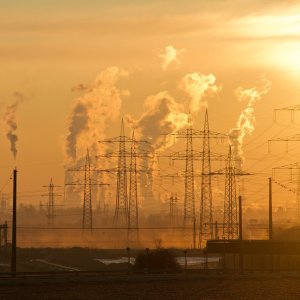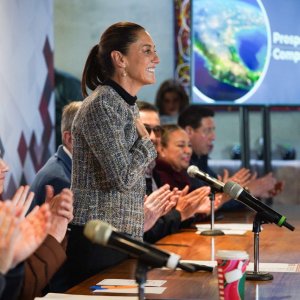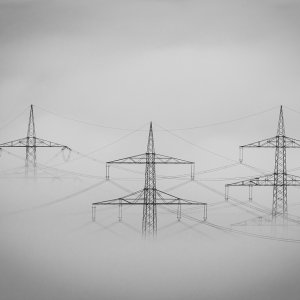Scientific Support Behind the Energy Transition

Q: How do the five core subjects of Centro Mario Molina influence its approach to the energy sector?
A: The Center operates across five core subjects: energy, climate change, urban sustainability, pollution and environmental health, and education. Since these subjects are inherently intertwined and it is difficult to trace their boundaries, we work on them transversally. When talking about energy, we are referring to the interface between the environment and energy in the oil, gas, and electricity sectors, as well as everything regarding demand from end users. Our current work in the electricity sector consists of tracing pathways to reach the country’s decarbonization goals for 2024, which involve a 35% participation of clean energies into the matrix. We discuss the role of each energy source, how to deal with intermittency, and the role of gas as a transition fuel, among other aspects.
Q: In which ways does the center work within the energy industry, and which areas have captured the interest of the Center?
A:Part of our work in the oil and gas sector includes discussing the possibility of producing shale gas as part of the country’s economic development without incurring a major environmental impact, and establishing the criteria under which this activity would be acceptable. The Center is heavily involved in energy efficiency, and now we are working on a project with the tourism sector, advising hotels on how to optimize their energy consumption. Hopefully, this endeavor will result in generation of a standardized public policy for the entire hospitality sector.
Generally, we try to plan for the topics we expect to work on. We try to give continuity to our lines of activity, as we usually work on cross-year projects, such as the long-term clean energy objectives. In addition, we can work on similar areas that are aligned to Centro Mario Molina’s mission or specific projects requested by the government, the civil society, or the private sector.
Q: What are the most economically viable clean energy sources to begin the energy transition?
A: The costs of clean energy have dropped significantly over the past few years. Perhaps the biggest competitor to natural gas is wind power, which is also potentially the most cost-effective modern renewable. Hydroelectric plants should also be considered because even though they require high investments, their operational costs are low. However, mini hydroelectric plants are not yet competitive against natural gas. In some regions of the country, wind energy can compete with natural gas because the wind resources are strong enough to allow generation for most of the day.
On the other hand, solar technology, which is more expensive than gas, has seen a drop in operational costs over the past few years due to technological advancements. An issue with some clean energy sources is their intermittent nature, which is not a problem for hydrocarbon-based generation. Therefore, clean energies require special grid management systems and storage mechanisms. Nonetheless, the most competitive renewable right now is wind, and solar PV will be a major frontrunner in a few years. Solar is not competitive in terms of costs at the moment, but when comparing costs from five years ago, there has already been a substantial reduction. Due to the rate of technological advancements, I am confident that solar energy will be competitive in a few years.
Q: More than a transition fuel, natural gas is positioning itself as the new base fuel. What are the environmental implications of using natural gas as the main source of electricity generation?
A: Natural gas is cleaner than other hydrocarbon-based fuels, such as fuel oil or coal, as it generates less carbon dioxide and sulfur oxide emissions. Additionally, combined cycle technologies are reaching significant thermodynamic efficiency levels, optimizing costs. The price of natural gas in North America is low and is expected to remain that way in the medium term. There are many factors that make gas an attractive technology for Mexico, so it makes sense for it to be considered a transition fuel. However, if we truly want a diversified energy matrix that complies with the established targets, the role of renewables is important.
Natural gas presents some problems. For instance, natural gas is not entirely clean when quantifying methane leaks through the chain, from drilling to commercialization. This can be mitigated by reducing methane leaks, but then costs to end users would increase due to the companies absorbing costs of improving the efficiency. This is important because the benefits of natural gas are being inflated due to companies’ failure to take these emissions and their global warming implications into account. On the other hand, renewable energy technologies are entirely compatible with natural gas. The latter can be used as a base load fuel with renewables, so it is possible to establish hybrid solar-gas plants. I do not see why natural gas should hamper the development of renewables, especially considering their compatibility and the fact that we need a diversified energy matrix.
Q: How can Mexico reconcile its clean energy objective with its increased oil production targets?
A: The General Climate Change Law mandates two main objectives. The first is to reduce the country’s greenhouse gas emissions by 30% from a baseline by 2020, and the second is to reduce emissions by 50% by 2050 from an absolute amount measured in 2000. In the INDCs that Mexico announced in March, which will be further discussed in Paris, the country committed to reducing its GHG emissions by 22% by 2030 in a non-conditional way. This differs from the targets stated in the Climate Change Law, which were set as conditional to financial support, technology transfer, and carbon markets, among other factors.
The Mexican INDCs’ goals also set a conditional target of 36% below BAU for 2030, which is higher than what was laid out in the Law. The targets are always established in relation to a baseline because Mexico is a developing country that needs to grow and build further infrastructure, and this implies that the country has not yet reached peak emissions. It is possible to increase oil production and simultaneously reach the climate change targets because the baseline considers the need to increase oil production. Mexico cannot neglect oil and gas activities, but it can produce hydrocarbons and electricity in the cleanest way possible. The key terms are ‘clean economy’ and ‘lowcarbon economy’, which means being able to develop as a country in the most sustainable way.
Q: Centro Mario Molina was involved in the creation of CELs. What made this system attractive for the Center?
A: The logic behind CELs was to give clean energy technologies, such as renewables, cogeneration, and even nuclear energy, an incentive. Otherwise these technologies would not necessarily be the first choice from an economic perspective. What makes CELs attractive is that they create a market that increases the system’s economic efficiency, because for some it is cheaper to generate clean energy and for others the cheaper option is buying a certificate. CELs are awarded to qualified users, who are obliged to present these certificates before the authorities.


















